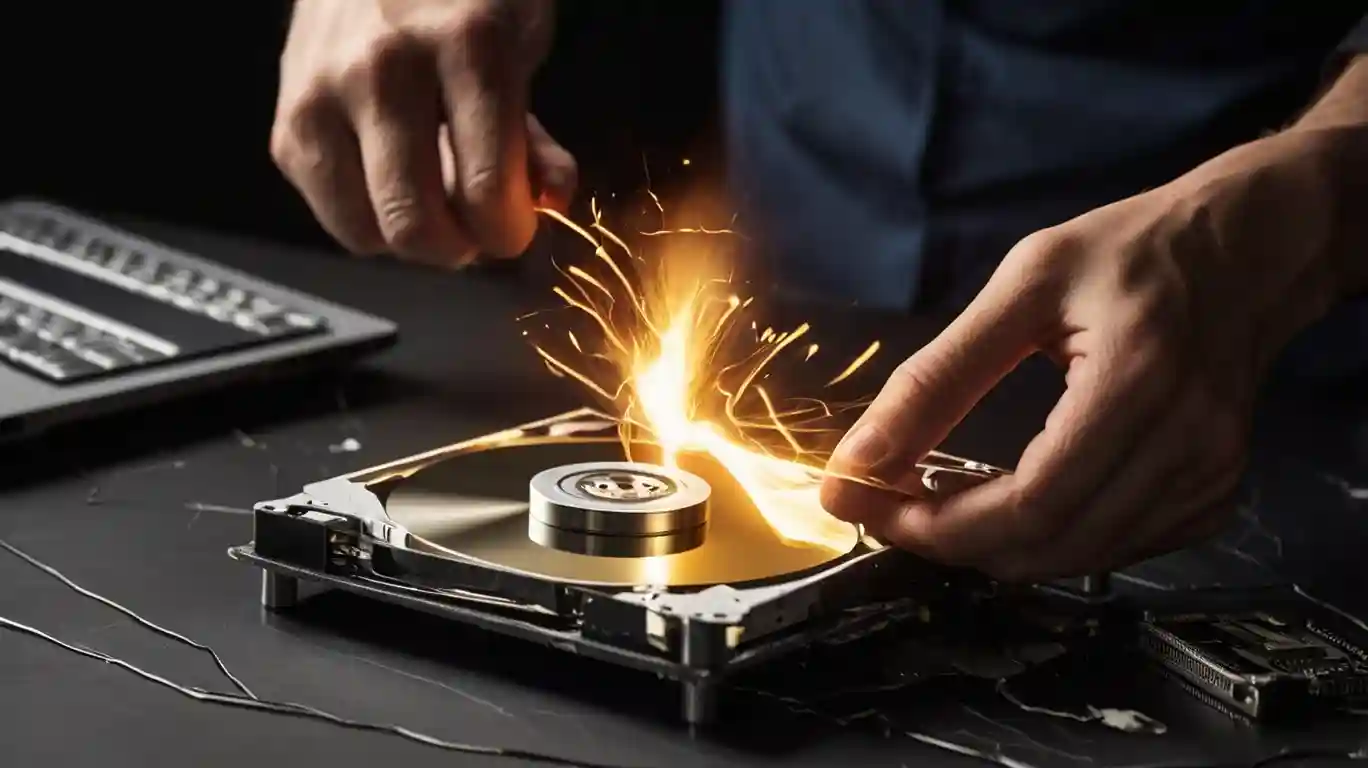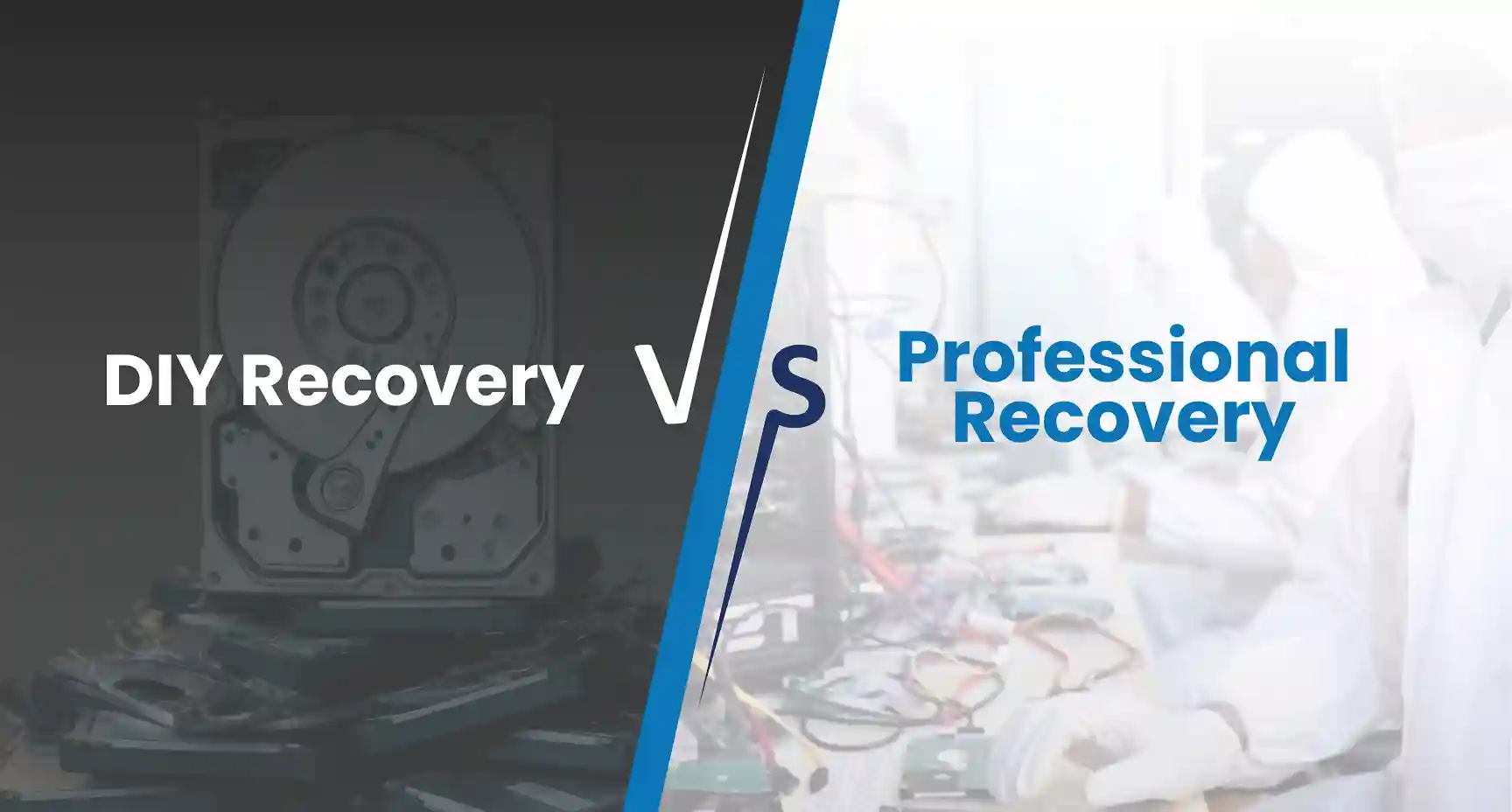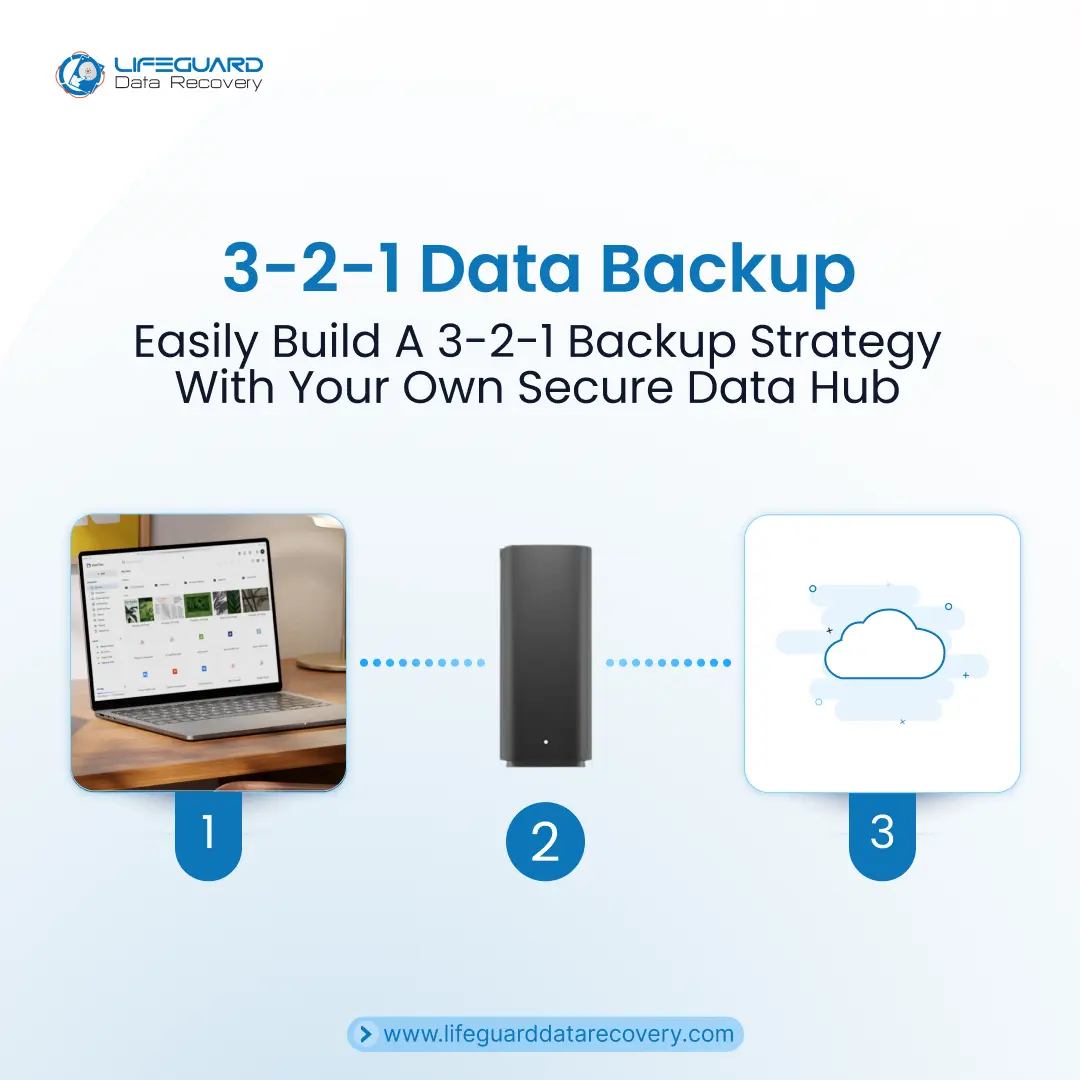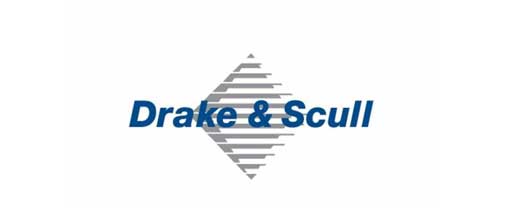What Is Data Recovery and How Does It Work? A Comprehensive Guide from Life Guard Data Recovery
What is data recovery? In today’s hyper‑connected world, our photos, financial records, and mission‑critical databases fuel daily life. Digital data loss is no longer a distant threat but an inevitable reality. Most crucially, it shows why entrusting your failed drive, RAID array, or smart device to Life Guard Data Recovery, the UAE’s trusted recovery specialist, is a wise decision. Put simply, data recovery is the expert‑driven process of locating, extracting, and reconstructing inaccessible information from damaged, corrupted, or formatted storage media.
Understanding Data Loss: Common Causes, Categories, and Devastating Consequences
The Genesis of Data Loss: A Spectrum of Scenarios
Why data loss happens is often more complex than users expect. Our experts suggest the common causes of data loss and how they impact both individuals and businesses.
Physical Damage: When Hardware Fails
- Our experts suggest that physical data recovery is required when storage devices suffer mechanical or electronic breakdowns.
- Lifeguard Data Recovery experts suggest RAID systems are vulnerable to multiple disk failures or RAID controller malfunction, making recovery complex and time-sensitive.
Logical Damage: Software and System Catastrophes
- Logical damage refers to data loss scenarios where the storage device remains physically intact but its data becomes inaccessible due to system-level errors. Lifeguard data recovery experts use professional-grade logical data recovery tools.
- Our experts suggest one of the most frequent causes of data loss. This creates a critical window for deleted file recovery. The sooner action is taken, especially with tools specialised in how to recover deleted files from HDD, the higher the chance of successful recovery.
- Many users format drives unintentionally, leading to formatted data loss. Our experts suggest that the immediate use of data recovery software can often restore data from quick formats.
- Professional logical data recovery services, like those at Life Guard Data Recovery, offer the best chance at restoring such sensitive digital losses securely and efficiently.
Human Error: The Most Common Culprit
Lifeguard data recovery professionals suggest common mistakes include unplugging a USB drive without safely ejecting it, which can lead to file system corruption. Our professionals require intervention in a data recovery cleanroom to prevent further damage.
Software Glitches and Bugs:
At Life Guard Data Recovery, our experts use advanced tools in controlled environments, such as our data recovery cleanroom, to ensure secure and precise recovery from such unexpected events.
The Ripple Effect: Consequences of Data Loss
For Businesses:
For businesses, Financial losses can stem from interrupted sales, prolonged operational downtime, and the high costs associated with the data recovery process.
This is where professional data recovery becomes essential.
What Exactly Is Data Recovery? A Comprehensive Definition and Its Critical Importance
Data Recovery Definition: More Than Just ‘Getting Files Back’
What is data recovery? It is far more than the simple act of retrieving deleted files. Lifeguard Data recovery is a highly specialised professional discipline that involves restoring inaccessible, lost, corrupted, or damaged data from storage media such as Corrupted hard drives, SSDs, USBs, memory cards, and RAID systems.
Why Data Recovery Is Important: The Ultimate Safety Net
Our experts suggest the benefits of data recovery include:
- Safeguarding family archives or mission-critical business files.
- Lifeguard data recovery experts minimise operational downtime and enable fast recovery from system failures.
- Rapid recovery reduces market delays and disruption. Meeting regulatory obligations even after hardware failure or breaches.
How Does Data Recovery Work? Decoding the Meticulous Process from Diagnosis to Delivery
The Data Recovery Journey Explained: A Step-by-Step Methodology
Step 1: Initial Assessment and Thorough Diagnosis
When we analyse what data recovery is, the first and most critical phase for our experts in the data recovery process is a comprehensive diagnosis. Accurate diagnosis is essential—missteps at this stage can cause further data damage. We begin by consulting the client to understand what happened, the device type, and the observed symptoms.
At LifeGuard Data Recovery, UAE clients benefit from our diagnostic service, offering peace of mind before any commitment.
Step 2: Choosing the Optimal Recovery Method: Logical vs. Physical
Logical Data Recovery Techniques
Lifeguard data recovery professionals focus on Logical data recovery, restoring files from drives that are functionally intact but logically inaccessible due to issues like accidental deletion, formatting, or malware attacks.
Physical Data Recovery Techniques
Physical data recovery is required when the storage media has suffered mechanical, electrical, or firmware damage. This includes problems like:
- Read/write head crashes
- Damaged platters or spindle motors
- Power surges are damaging the circuit board
Life Guard Data Recovery stands out in the UAE for its state-of-the-art cleanroom and expert-level physical recovery capabilities.
Step 3: Data Extraction and Meticulous Reconstruction
Imagining the Drive for Safe Recovery
The first step in this phase involves creating a sector-by-sector image of the damaged drive. This “working copy” allows our engineers to perform data recovery without risking further harm to the original media. Imaging is essential, especially in physical data recovery, to ensure data integrity during the extraction process.
Raw Data Extraction in Severe Cases
If the file system is too corrupted or inaccessible, raw data extraction methods are employed. For SSDs, this may include direct access to NAND memory chips, bypassing the standard interfaces. This step is critical when logical structures are beyond repair but data still physically exists.
Step 4: Data Validation and Quality Assurance
Ensuring Integrity Through Rigorous Checks
After data extraction and reconstruction, professional data recovery involves stringent integrity checks to confirm that the recovered files are free from corruption. This includes verifying checksum accuracy, file structure consistency, and data completeness.
File Testing and Usability Verification
Next, lifeguard data recovery professionals open and test critical files such as documents, spreadsheets, databases, images, and videos. Our experts are especially skilled in deleted file recovery scenarios where file corruption risk is high, it’s a crucial part of professional data recovery.
Step 5: Secure Data Delivery
After successful recovery and validation, the final step is the secure handover of your data. At Life Guard Data Recovery, we provide multiple delivery options tailored to your needs:
- Encrypted USB drives for sensitive data
- New external hard drives for large file sets
- Secure cloud download links for quick access to smaller recoveries
Lifeguard Data Recovery’s professional data recovery team strictly adheres to international data privacy standards.
Comprehensive Data Recovery Services by Life Guard Data Recovery: Expertise for Every Device
Specialisation Across All Storage Media
Hard Drive Data Recovery
Whether you’re dealing with a clicking or beeping drive, an unrecognised disk, logical corruption, or accidental formatting, our hard drive data recovery experts can help. We recover data from all interfaces — SATA, IDE (PATA), SCSI, SAS, and external drives — across top brands like Western Digital, Seagate, Toshiba, Hitachi, and Samsung. We also specialise in how to recover deleted files from HDDs using industry-best techniques.
SSD Data Recovery
SSD data recovery requires specialised expertise due to factors like TRIM commands, wear-levelling algorithms, and encrypted controllers. We employ advanced recovery methods such as chip-off techniques, firmware regeneration, and direct NAND access. Our service covers all SSD types: SATA, NVMe, mSATA, and M.2.
RAID Data Recovery
RAID data recovery is among the most complex services we offer, involving multiple drives configured in arrays like RAID 0, 1, 5, 6, 10, and JBOD. Failures can include simultaneous drive crashes, controller malfunction, bad stripes, or accidental reconfiguration.
Phone Data Recovery
We also offer advanced phone data recovery for both Android and iOS devices. Common issues include accidental deletion, water damage, broken screens, and update failures. Our techniques include JTAG, eMMC/eMCP chip-level extraction, and micro-soldering to recover data like photos, videos, contacts, messages, and app data. Trust Life Guard Data Recovery to retrieve your mobile data securely and professionally.
USB Flash Drive Data Recovery
Our experts suggest that USB flash drive data recovery addresses issues like bent connectors, broken casing, undetected drives, or logical corruption. Our lifeguard Data Recovery professionals utilise advanced techniques such as chip-off recovery to access memory chips directly and safely retrieve your critical data from even the most damaged flash drives.
SD Card Data Recovery
SD card data recovery is essential for users of digital cameras, drones, and mobile devices. Lifeguard Data Recovery experts recover photos, videos, and files with precision using proven techniques that minimise further risk to your media.
Deleted File Recovery
Lifeguard Data Recovery’s deleted file recovery service is designed to recover accidentally erased data. Since the data remains intact until overwritten, prompt professional action increases the success rate significantly. Life Guard Data Recovery ensures timely and secure restoration.
Partition Recovery
Our professionals offer Partition recovery services that become essential when an entire drive partition is accidentally deleted, formatted, or rendered unreadable due to software errors or logical corruption.
Cloud Data Recovery
Cloud data recovery is always necessary when data is accidentally deleted, overwritten. Our team of expert assist users in restoring data from major cloud platforms (e.g., Google Drive, OneDrive, Dropbox) by working with backup snapshots, version histories, and recovery tools to ensure minimal disruption and maximum data retrieval.
DIY Data Recovery vs. Professional Data Recovery: A Critical Decision Tree
The Allure and Dangers of DIY Data Recovery
DIY data recovery using consumer-grade data recovery software (like Recuva or Disk Drill) may seem appealing, especially for minor issues like recovering a recently deleted file.
Our expert engineer suggests that if you are attempting to open a drive outside a data recovery cleanroom, it can expose it to dust, leading to irreversible damage. Additionally, for critical data, professional data recovery is the safest path, especially when confidentiality, integrity, and success rate matter most. One wrong step in a DIY attempt can turn a recoverable case into a total loss.
The Unmatched Value of Professional Data Recovery
Lifeguard Data Recovery’s professional data recovery team comprises highly trained engineers with years of experience handling complex cases across all device types and failure modes.
Our experts use specialised tools and proprietary techniques, including advanced firmware editors, NAND programmers, and disk imaging systems. For physical recoveries, we have a certified data recovery cleanroom that ensures a contamination-free environment essential for opening and repairing delicate storage media.
Understanding Data Recovery Success Rate: Factors That Make the Difference
Factors Influencing Recovery Success
Type and Severity of Damage: Our professional experts suggest that logical data loss, such as accidental deletion or formatting, typically has a higher recovery success rate than physically damaged drives.
Immediate Action Post-Data Loss: We suggest that the continued use of the affected device increases the risk of overwriting lost data. For immediate action, contact Lifeguard Data Recovery experts.
Life Guard Data Recovery’s Commitment to High Success Rates:
At Life Guard Data Recovery, we have ISO ISO-certified cleanroom lab, our skilled engineers are available 24/7 to respond to our clients. Our exceptional data recovery success rate reflects our unwavering commitment to precision, expertise, and transparency.
Data Recovery Cost: Demystifying the Investment in Your Digital Assets
Understanding how much data recovery costs depends on multiple technical and situational factors. At its core, data recovery is a specialised service that varies widely in complexity and required resources.
Factors Affecting Data Recovery Cost:
Type of Storage Device: Our expert suggests that the standard HDD recoveries are typically less costly than RAID configurations, and accidental deletions are less expensive compared to physical damage.
Complexity of Recovery: Rebuilding RAID arrays, working on encrypted drives, or performing deep file carving increases recovery cost.
Turnaround Time: We provide Urgent or emergency services; our expert engineers are available 24/7.
Donor Components: If your device requires replacement parts, our experts suggest that sourcing them adds to the overall cost.
Life Guard Data Recovery’s Transparent Pricing Model:
Life Guard offers an initial, no-obligation diagnosis, allowing clients to understand the issue before committing.
A detailed quotation follows, outlining all technical procedures and data recovery pricing clearly. Most importantly, if applicable, Life Guard maintains a “No Data, No Charge” policy—clients only pay if recovery is successful.
Beyond Recovery: The Indispensable Role of Data Backup in Preventing Future Loss
Data Backup vs. Data Recovery: Understanding the Crucial Distinction
Data recovery is a reactive process, employed after data loss has occurred. On the other hand, data backup is a proactive approach. It involves making copies of important data to restore from in the event of loss. Simply put, data recovery is about rescue, while backup is about readiness.
Data recovery is the emergency service, stepping in when the unthinkable happens.
The Importance of a Robust Data Backup Strategy
Lifeguard Data Recovery Expert engineers recommend the 3-2-1 backup rule:
- 3 copies of your data
- 2 different media types (e.g., external drive and cloud)
- 1 off-site copy for disaster protection
Automating backups ensures regularity, while routine testing confirms data can actually be restored.
Life Guard Data Recovery’s Recommendations for Data Protection:
Lifeguard Data Recovery strongly recommend implementing a structured data backup strategy to avoid future loss. Our expert engineers guide clients on best practices, backup automation, and recommend trusted solutions customised to business or personal needs, ensuring long-term data integrity and peace of mind.
When to Trust Life Guard Data Recovery Services: Your Partner in the UAE and Beyond
Clear Indicators You Need Professional Data Recovery
Knowing when to use data recovery services is crucial to avoid permanent loss. Warning signs include:
- Accidental deletion or formatting of critical files from an actively used drive
- Ransomware encryption without working backups
- RAID array failure or misconfiguration
- Any case where data is irreplaceable or business-critical
Professional data recovery services offer the right expertise because attempting DIY solutions in such cases can significantly lower the chances of recovery. and equipment to handle these critical situations.
Why Life Guard Data Recovery Stands Apart in the UAE
Here’s why Life Guard Data Recovery UAE is the trusted name across the region:
- Expert Engineers: Lifeguard Data Recovery has certified specialists experienced in HDDs, SSDs, RAID systems, mobile devices, and more
- Cleanroom Facility: We have a certified ISO Class 100 environment for sensitive physical recoveries.
- Advanced Tools: Proprietary and industry-leading solutions for complex data loss cases
- Proven Track Record: High success rates and recoveries from previously failed attempts
- Strict Confidentiality: Data handled with complete privacy under secure protocols
Frequently Asked Questions (FAQs) About Data Recovery
What should you do immediately after data loss?
Our experts advise that you power off the device immediately and disconnect it from power or network sources. Contact a Lifeguard Data Recovery professional who specialises in data recovery in an emergency.
Is data recovery software reliable for all types of data loss?
No. Data recovery software is useful only for simple logical issues like recently deleted files. It cannot recover from hardware failure or advanced logical corruption and may worsen the problem if misused.
How long does the data recovery process usually take?
It varies. Logical issues may be resolved in 1–3 days, while complex physical recoveries (involving donor parts or RAID reconstruction) can take longer. Express services are available.
Is my data safe and confidential during the recovery process?
Absolutely. Lifeguard Data Recovery follows Secure data recovery practices.





















